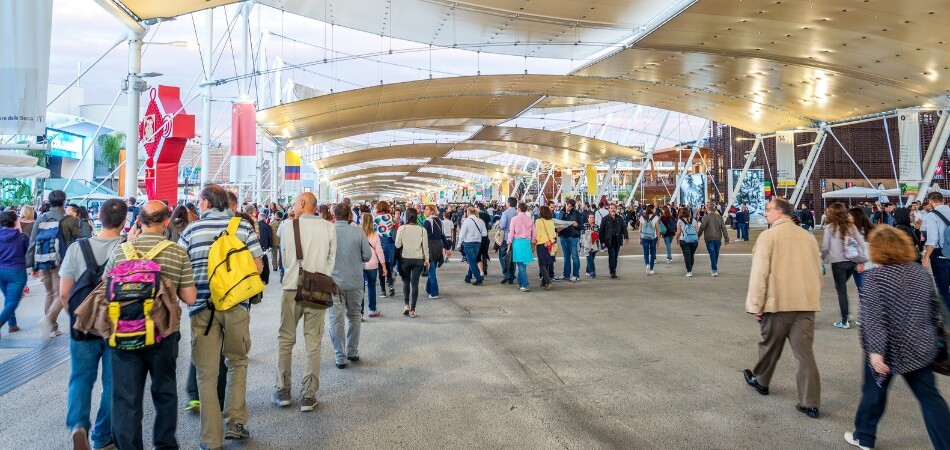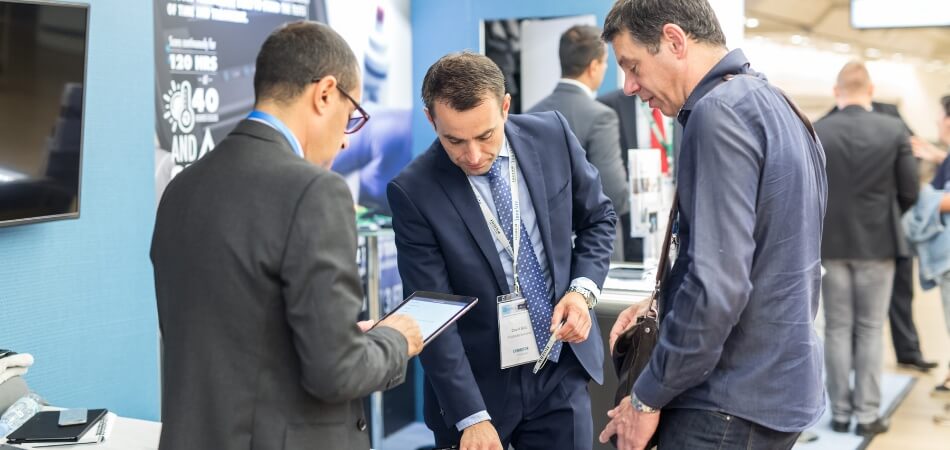Navigating the world of professional engagements can often be confusing, especially when it comes to choosing the appropriate attire. You might be wondering, “what to wear as a Vendor?” especially if you’re new to in-store events.
The simple answer is: business casual. Dressing appropriately not only leaves a positive impression but also dictates how potential clients perceive your brand.
The expectation is clear: vendors and their agents should always present themselves in attire that is both business casual and professional in appearance. This blend ensures a balance between comfort and formality. In this blog, we’ll delve deeper into what exactly constitutes business casual and provide tips to help you master this essential dress code for your events.
Who are the Vendors?
Navigating the vast marketplace, we often encounter individuals and entities providing goods or services. These are commonly referred to as vendors. But, who exactly are they?

Vendors are typically businesses or individuals that offer products or services for sale. They can range from large corporations to local artisans. Their primary goal is to fulfill the needs of consumers or other businesses.
In the business world, vendors play a crucial role. They ensure that products, from raw materials to finished goods, reach their intended destinations. Their partnerships with other enterprises are vital for the seamless flow of commerce.
What is the Purpose of a Vendor at an Expo?
Expos bring together a myriad of businesses and professionals under one roof, fostering interactions and collaborations. Among these participants are vendors. But what role do they play?
- Vendors display their products or services, offering attendees a firsthand look. This direct exposure often leads to immediate sales or future business.
- By engaging directly with potential customers, vendors gather valuable feedback. Such insights help refine offerings and cater to market demands.
- Expos offer a platform for vendors to foster business-to-business relations. Establishing connections can lead to lucrative partnerships and collaborations.
- Vendors typically launch new products at expos. These events provide the perfect stage for unveiling innovations to a receptive audience.
- Participation in expos enhances brand visibility. For vendors, this is a strategic move to boost brand recognition and credibility among peers and customers.
- Educational seminars and workshops are commonplace at expos. Vendors can both host and attend these sessions, positioning themselves as industry leaders and learners.
- Networking is a significant component of expos. Vendors utilize these opportunities to connect with industry influencers, potential investors, and other stakeholders.
- Expos often host awards or recognition events. Vendors can participate, gaining accolades that further validate their brand and offerings in the industry.
- By analyzing competitors at expos, vendors can gauge market trends. This competitive analysis aids in strategic planning and product differentiation.
- Vendors can also benefit from exclusive expo discounts and deals. Whether it’s for raw materials or services, expos can be cost-saving avenues.
- Lastly, expos often lead to media exposure. Vendors can garner attention from journalists, bloggers, and influencers, amplifying their reach beyond the event’s confines.
What to Wear as a Vendor?
Navigating the nuances of professional events, vendors often question their attire choices. Striking the right balance is essential. Let’s explore the ideal choices for vendors.

Professional First Impression
Dress codes reflect brand identity and professionalism. As a vendor, ensuring you look polished is vital for initial interactions. Business casual usually hits the mark.
Comfort is Key
All-day events require ease of movement. Opt for outfits that allow you to move freely without compromising on style. Remember, comfort enhances confidence during interactions.
Branding Elements
Integrating company colors or logos subtly can make an impact. Think tie pins, scarves, or even branded name tags. This aids in brand recall among attendees.
Weather and Venue Adaptability
Consider the expo’s location and season. If it’s an outdoor summer event, light breathable fabrics work best. For indoors, layers might be more suitable.
Functional Footwear
Your feet bear the brunt at expos. Choose shoes that are both stylish and comfortable, ensuring you can stand or walk for extended periods.
As a vendor, blending professionalism with comfort in your attire can make all the difference. It not only enhances brand image but also ensures effective engagement at events.
Types of Events for Vendors
The vibrant world of events provides numerous opportunities for vendors to showcase and sell. Each event type has its unique environment and audience. Let’s explore some of these events.
Trade Shows
A hub for industry-specific companies, trade shows allow vendors to present their latest products. Attendees are usually professionals looking for business partnerships. It’s an ideal place for B2B networking.
Farmers’ Markets
Local producers and artisans gather at farmers’ markets. They present fresh produce, handcrafted items, or organic products to community members. Such events foster a connection between producers and consumers.
Craft Fairs
Craft fairs celebrate handmade artistry and creativity. Vendors at these events showcase unique creations, from jewelry to pottery. Visitors appreciate the personal touch and craftsmanship.
Pop-Up Shops
Temporary and trendy, pop-up shops offer brands a limited-time storefront. They create buzz, allowing vendors to test new markets or products. Strategically located, they attract both regulars and impulse buyers.
Festivals and Conventions
These large-scale events draw diverse crowds. Vendors cater to specific interests, from comic books to gourmet food. Such events offer a mix of entertainment and commerce.
In essence, vendors have a plethora of events to choose from. Each type aligns with different products, audiences, and business goals. Choosing the right event amplifies a vendor’s success potential.
Tips for Vendors to Choose the Right Attire
For vendors, attire is more than just clothing; it’s a statement of brand and professionalism. Picking the right outfit can influence interactions and outcomes.

Here are some tips to consider:
- Reflect Brand Identity: Your attire can echo your brand’s colors and style. It subtly communicates your business ethos and reinforces brand recall.
- Prioritize Comfort: Being at ease is essential. Ensure your clothing is comfortable, allowing free movement and adaptability to different event settings.
- Factor in the Event Type: Tailor your outfit based on the event. A trade show might require formal attire, while a craft fair could be more relaxed.
- Practical Accessories: Think of functional add-ons like pockets or utility belts. They can store essential items, ensuring they’re within easy reach during the event.
- Adapt to Weather: Check the weather forecast. Dress in layers for cooler climates and opt for breathable fabrics during warmer conditions.
- Invest in Good Footwear: Hours on your feet demand comfortable shoes. A blend of style and comfort ensures you remain pain-free and presentable.
Last Words
Navigating the intricate dynamics of professional events brings to the forefront an essential query: “what to wear as a Vendor?” The attire a vendor chooses goes beyond mere aesthetics; it’s a visual representation of their brand, ethos, and dedication to their profession.
Embracing business casual as the ideal blend of formality and approachability can set the right tone. From the expansive trade shows to intimate farmers’ markets, each setting demands a unique sartorial approach, but the underpinning principle remains: clothing should echo brand identity, prioritize comfort, and cater to the event’s ambiance.
Vendors, as crucial cogs in the commercial machine, must, therefore, invest time in choosing attire that enhances their presence and magnifies their brand’s message. The right attire is the silent communicator before a word is even spoken.


